“The Masque of Youth” is a 1918 mural by Chicago artist Jessie Arms Botke, located in the third-floor theater of Ida Noyes Hall. It depicts a ritual performance—a “masque”—common in 17th-century Europe in praise of a court or aristocrat. Botke was inspired by a ceremony performed two years earlier by 300 members of the University of Chicago community in honor of the opening of Ida Noyes Hall. According to a 1995 UChicago Magazine article, the murals “still gracefully convey the masque’s gentle hopefulness and its participants’ unquestioning belief in higher learning’s edifying powers.”
When I arrived at the third-floor theater to attend a March 28 Night Owls talk hosted by professor Agnes Callard, I, along with a room already full of students, was preparing to bear witness to those “edifying powers.”
Night Owls, starring Callard, is organized by the Department of Philosophy. A few times each academic quarter between 9 p.m. and 11:30 p.m., the department orchestrates a debate between Callard and another public intellectual over a philosophical question. The night I went, the guest speaker was Atlantic writer Elizabeth Bruenig, and the philosophical question was “Must we forgive those who have wronged us?” While the events are normally well attended, according to Callard, this one was by far the largest. This Night Owls was also the first to occur after journalist Rachel Aviv profiled Callard in her widely read New Yorker article, titled “Agnes Callard’s Marriage of the Minds.” The article, which was published on the stressful eve of winter quarter’s final exam week, provided an amazing opportunity for distractions, gossip, and procrastination—quintessential UChicago pastimes.
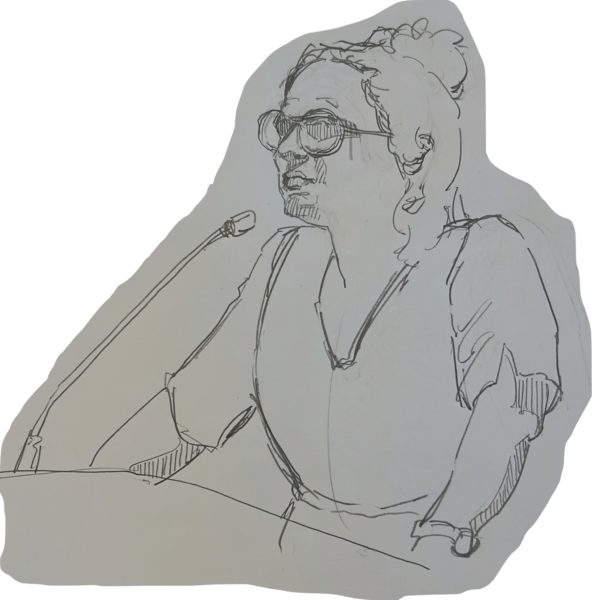
Three weeks later, with the onset of a new academic quarter, people were still whispering about the article in the audience of the theater. Their interest wasn’t even hindered by the need to stand. Half an hour into the talk, students who had entered the lecture hall at the beginning of the talk were still stationed at the door, jackets and backpacks on, in an almost perfect pyramid formation, enraptured and listening to Callard and Bruenig talk on stage.
In the next few minutes, Callard addressed the pyramid, encouraging them to find places to sit in the already overcrowded walkways. “There are spots up here on the floor, if other people want to come sit on the floor,” she said, gesturing to a front space just below the stage. The students dispersed toward the front and the side walls, beginning to blend into Elizabethan figures in “The Masque of Youth,” who were facing toward the stage and frozen in celebration of an invisible nobility. The real-life students stared in awe at Callard, who was still directing traffic from an armchair onstage.

In 2006, journalist Christopher Hayes wrote an In These Times article in which he recounted his experience and opinions on enrolling as a “student” in professor Allen Sanderson’s Principles of Macroeconomics course. “What We Learn When We Learn Economics” begins by describing a thought experiment that Sanderson, a senior instructional professor in the Department of Economics, put forward for the students in his second lecture. Just as in Callard’s Night Owls, the room was overcrowded. Hayes wrote: “Noting that there are only 26 spots left in the class for the 52 students who would still like to enroll, [Sanderson] asked, ‘How should we figure out who gets to go into the class?’”
The answer Sanderson wanted was “auction by price,” which a student soon suggested. While Sanderson explained the economic reasoning behind this decision, Hayes remarked on his uneasiness at the answer: The idea seems obviously biased toward wealthier students who could afford the theoretical auction, and therefore this solution would be neither equitable nor true, since money is not an accurate measure of desire.
These overcrowded lecture halls and common rooms turned professorial palaces show students’ fascination with Callard and Sanderson. What these students want is to witness these professors in action. On the surface, Callard’s and Sanderson’s reactions to the overcrowding seem like opposites—Callard’s method of calling students in more inclusive, Sanderson’s method of auctioning seats to his class more exclusive. Yet both want to create a space where theory—philosophical or economic—is applied to real-life situations.
Outside of the overcrowded hall, Callard and Sanderson reside in offices that reflect their pedagogical methods. Callard’s office looks like an eight-year-old’s dream room—that is, if the eight-year-old in question also really liked Socrates. Her rainbow color scheme covers books, rugs, wallpaper, a journal (which Callard quickly flips through), and a letter-bead bracelet on her wrist that spells out “SOCRATES” in capital letters. In contrast, Sanderson’s office is slightly more conventional. It is filled with books and signed baseballs, with stacks of papers on the desk and one wall dedicated to a brass rubbing from Adam Smith’s grave in Edinburgh, Scotland.
Besides their offices, much more differentiates Callard from Sanderson and Sanderson from Callard—namely that they specialize in different social sciences—philosophy and economics—with different methods for understanding the world. Additionally, Sanderson joined the UChicago faculty in 1984, making him one of those professors who’s been an “institution” for decades, whereas Callard joined the faculty in 2008, making her renown on campus more recent.
At the University of Chicago, Callard and Sanderson thrive both as educators and as public personalities. Some students love them, while others are more critical of one or the other. Regardless of students’ relationships with these professors—whether they know them through the overcrowded lecture hall, through social media, or simply through gossip—people feel entitled to make moral and professorial judgments about both of them and have created quasi-cults of personality around them. Yet Callard and Sanderson also contribute to their own fame (or infamy, depending on who you ask) by attracting a wider audience beyond their academic fields.
This self-creation, coupled with student cults, produces professorial images that eclipse the professors themselves. As Callard and Sanderson practice moving ideas from the theoretical to the practical, they become more theoretical to most students on campus. They become ideas, representatives for controversial views much larger than themselves. These professors’ on-campus relevance provides an opportunity for the campus to discuss certain questions that plague UChicago life: What is a professor’s responsibility in molding young, impressionable minds? How much should students follow the guidance of professors outside of the classroom? And how does one live that coveted life of the mind without sacrificing real life itself?
There are many other notable professors on our campus, but few are as easily accessible to underclassmen as Sanderson and Callard while still retaining their lore. Each teaches or organizes an introductory class in their field, which often attracts younger students with undecided majors looking to be inspired or convinced to follow a certain academic path. Both professors take pride in their fields and give frequent public talks. Aside from hosting philosophical forums like Night Owls, Callard has also created philosophy courses as the Director of Undergraduate Studies that give non-majors a taste of the field. Each fall and winter quarter, Sanderson teaches one of the Principles of Economics sequences, which introduce students to either microeconomics or macroeconomics and are designed for those with no prior exposure to the field. I can personally attest to the fact that Callard and Sanderson are even easily accessible to those underclassmen not enrolled in their courses: Sanderson answered my interview request email sent at 2 p.m. on April 16 a single minute later at 2:01 p.m., while Callard responded to the same request 16 minutes later.
A second factor that separates the fandom of Callard and Sanderson from other professorial admiration at UChicago is students’ particular obsession with these figures despite the face that many have little contact with them.
Sanderson is often the first professor students hear about when arriving at UChicago, regardless of whether they plan to take his classes. “I heard about Sanderson when I first stepped on campus,” said Simone Harradence, a fourth-year economics and philosophy major who has now taken classes with both Sanderson and Callard. Sanderson began teaching courses on principles of micro- and macroeconomics a few years after coming to UChicago in 1984. As he explains, “I have ended up teaching more students than anybody in the history of the University of Chicago.” For the last two years alone, Sanderson has taught 900 students per year, and he reports that his classes for the 2023 fall quarter are already “sold out.”
“I just joined the class and didn’t know what I was getting into,” said Luis Carrillo, a second-year student who took Principles of Microeconomics with Sanderson in the fall of his first year. Still, Carrillo vividly remembers that upperclassmen seemed to react with intrigue and excitement whenever he told them he had signed up for the Sanderson class.
Callard also appears to be one of the first names people hear about when coming to UChicago. “If you’re interested in philosophy, she’s kind of a known name as soon as you enter the school,” said Ahan Raina, a fourth-year philosophy and Law, Letters, and Society major. Raina began attending Night Owls his first year and has continued since. In winter 2023, he finally took a class with Callard. “I would say,” Raina explained, “a big factor in me choosing to take that course was the fact that it was [with] her and I finally got to see what it’s like to be taught by her.”
Awareness of these professors also reaches outside the student body and may occur before students even set foot on campus. Callard and Sanderson have historically attracted this attention because of personal or political scandals that reach audiences outside of Hyde Park. In February 2022, a question Sanderson wrote for his Principles of Economics course midterm sparked a heated Twitter debate for its alleged disparaging of economists from other universities, as well as Vermont senator Bernie Sanders (A.B. ’64). This is how Michael Clancy, a second-year math and philosophy major, learned of Sanderson in the winter before starting college. Clancy is an example of the many students on UChicago’s campus who have no direct stake in this professorial fixation. He’s had very few interactions with each professor outside of hearing about them on Twitter, on Sidechat, and from other students. Yet Clancy feels keenly aware of them.
“I don’t have any direct exposure to these professors. But I have a lot of opinions about them, whereas I don’t about professors that I do have,” he said. This is the kind of attention that differentiates educators like Sanderson and Callard from their peers: They have managed to reach students beyond their respective fields.
Clancy’s consciousness of Callard was a bit more gradual. After attending her 2022 Aims of Education address at the start of the school year, Clancy began hearing talk of Callard’s marriage to her former graduate student, professor Arnold Brooks, and divorce from a fellow philosophy department faculty member, professor Ben Callard. At this point in the year, students mainly knew about the topic through Callard herself, since she had philosophized it into a Night Owls event in 2018. A month into the school year, Clancy was amused once again by Callard’s takes after following a Twitter war over her publicized tradition of throwing out her children’s Halloween candy. The final “puzzle piece” that cemented Callard’s fame for Clancy was the March 2023 profile of Callard in The New Yorker. While Clancy expressed hesitancy to criticize without personally knowing Callard, his reaction to the article was that she had “applied this veneer of intellectuality to this thing that’s not that at all,” he said. Clancy was skeptical of how Callard had discussed her personal relationships as a philosophical statement about love. The article also sparked a new wave of Callard criticism off campus and on the Internet. In a single week, a profile of Callard’s unconventional personal life had inspired an impressive number of mini debates styled like “Night Owls”: impromptu conversations over marriage and Callard’s public persona.
The wide renown of Sanderson and Callard at UChicago is partially created by this outpouring of student conversation that has emerged around Sanderson and Callard not only as public intellectuals but also as private people. Morgan Brandmeyer (A.B. ’23), who majored in economics and psychology, thinks that one similarity between the two professors is that they often utilize audacious teaching methods. As a first-year, Brandmeyer took Sanderson’s Principles of Economics sequence in the fall and winter quarters and began working as a teaching assistant for the same class that summer. She then took an introductory philosophy class with Callard in her third year. With Callard and Sanderson, “it’s kind of like we get to exist in territory that other people maybe would be uncomfortable to exist in,” Brandmeyer said. Most students agreed that the discomfort of a Sanderson classroom often stemmed from his lack of political correctness, while Callard’s classroom, it stemmed from her willingness to discuss any topic, including her own love life. Yet it is precisely because of these taboo subjects that students are drawn to these educators.
While much of the public conversation around Sanderson and Callard has been propagated by students and the media, these professors also participate in their own mythologizing. As controversial public figures with unorthodox ways of applying their craft, they too foster a provocative environment.
Callard appears to be conscious of her public persona and how it has shaped her image. Moreover, she has theories that explain her relevance. As an undertaker of various public philosophy projects, Callard thinks she is better known than the average UChicago professor. In one of these projects, social media, Callard understands that she has become “someone that you have a take on…a little bit of a Rorschach test for other people,” she said.
“I think I’m just also weird,” Callard said, explaining that she speaks much more publicly in and out of the classroom about her own life experiences than most academics. Callard also notes her colorful clothing as a technical reason for garnering attention (making it apt that the UChicago admissions Instagram recently featured her “fit checks”).
On a more serious note, “I think something I’m good at is getting people who aren’t already interested in philosophy to be interested in philosophy,” she said. Callard embodies not only the mark of a passionate professor but also the mark of a smart self-promoter. For some, she appears as the butterfly on the Rorschach inkblot images; others project a completely different meaning onto her. Callard understands the inner workings of her personal brand, even as she is constantly interpreted and reinterpreted by her public audience.
On the other hand, as Sanderson fosters his professorial image, he appears to be much less conscious of his brand. When I first asked Sanderson why he thought he appealed to students, he responded, “I have no idea why people sign up for my courses.” He then proceeded to offer that it was likely because he estimates that over half of undergraduates will take at least one economics course at UChicago, and likely one of his, as they serve as introductions to the field. Additionally, Sanderson said, “I think I’m pretty good at what I do.”
Yet Sanderson, just like Callard, seems to be more of a conscious self-promoter than he lets on. One wall in his office is covered with 25 event posters, mostly from past UChicago Family Weekends advertising Sanderson’s public lecture and debates on topics such as “The Wealth Tax” or “Economics and November 3rd, 2020.” He also has a personal website that details his biography, course offerings, and a photo page filled with 61 images of himself lecturing or posing with students over a dinner, dressed in costumes, or attending his office hours. After I met with Sanderson for an interview, he gave me an extra copy of The Fatal Equilibrium by Marshall Jevons, an economic-themed mystery novel that he has students read in his Principles of Microeconomics course. I understood the novel as an appeal by Sanderson for me to register for his classes next fall and, more generally, as a plug for his teaching.
Sanderson and Callard seem to share a certain pedagogy. For both professors, the final goal is not to transform all UChicago students into economics majors or philosophy majors but instead to instill in them a certain intuition for the subjects. Students also acknowledged that a significant similarity between the two was their eagerness to explore and experiment in front of students with what it could mean to be guided personally by economic or philosophical thinking outside a purely academic setting.
Callard believes that her work as a public philosopher most directly supports this agenda. Through Night Owls, speaking at other universities, and journalistic writing, Callard does more than teach philosophy; she practices it. “I wanted it to be that we’re doing philosophy,” she said of her goal for Night Owls. For Callard, practicing philosophy means practicing inquiry. And this investigation is not simply asking questions of oneself but, as Callard believes, it is in the act of engaging and debating others. “I’m committed,” Callard said, “to the value of inquiry in the sense that I haven’t found any better way to live yet, but like Socrates, I would say I’m open to being refuted on that if somebody shows me a better way.” This practice is for her own amusement and interest, and it also serves as an introduction for curious students as to how they can “do” philosophy in their own lives, public or private.
As one of Callard’s former students, Raina is struck by just how rare it is to see modern philosophers who attempt to go beyond philosophy’s academic borders. “I think professor Callard is living that sort of [philosophical] life in the world, where for a lot of people, philosophy is their escape from the world. I don’t know if I’ve met a person yet who takes the notion of living a philosophical life to its fullest extent as she does,” Raina said. Maggie Sandholm, a philosophy Ph.D. student and former teaching assistant for Callard, agrees that in her brief time working with Callard, she doesn’t think she saw the “philosopher hat come off.” Instead, Sandholm felt that Callard’s methods were focused on “an ongoing project of philosophy.”
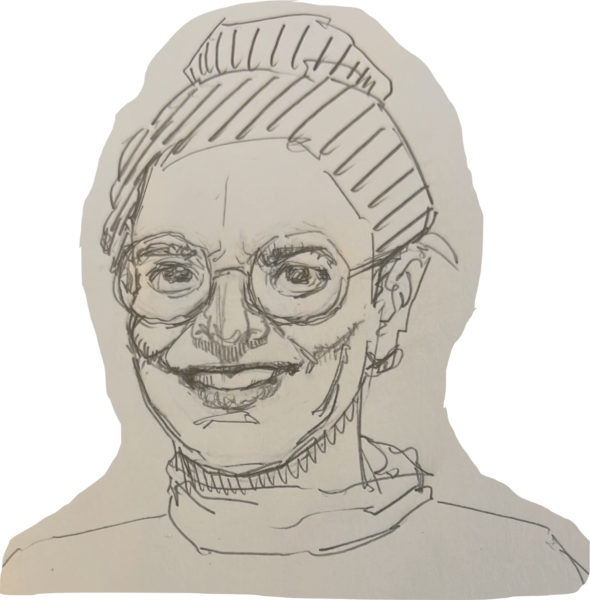
Back in her office, and outside of an overcrowded hall or Twitter page, Callard seemed less keen on living a purely philosophical life. “I think one of the things for me, one of the deep tensions about being a philosopher, is that sometimes you’re engaged in philosophy and asking yourself really important questions about how you should live your life. And then there’s other times when you’re not doing that,” she said. She has even polled people on Twitter about this topic, asking professional philosophers, “When is your real life happening? Is it when you take off your philosophy hat or when you put your philosophy hat on?” According to Callard, the majority responded “both.” Ironically, Callard has also tweeted opinions like the one that Rachel Aviv included in her New Yorker article: “If you’re a real philosopher, you don’t need privacy, because you’re a living embodiment of your theory at every moment, even in your sleep, even in your dreams.”
Even a Socrates fanatic like Callard puts checks and balances on philosophical life. “You can’t be doing [philosophy] when a doctor is examining you, right? Or if you have a baby, and you’ve just got to change the baby’s diaper, that’s not philosophy. It’s just not true that everything’s philosophy,” Callard said. However, what Callard sees as fit for philosophical consideration does not seem fixed. For her, a medical examination or a baby’s hygiene may be beyond the scope of philosophy, but marriage and divorce are not. Someone else might draw the line at marriage and readily philosophize about the doctor or the baby. Although Callard still privately wrestles with how and when one does philosophy, her public persona continues to promote that living a philosophical life is always possible. Yet when and how to apply a philosophical flair to real life is debatable; what is under the purview of questioning is up to the individual. As Callard’s case shows, there are familial and material consequences to using philosophical thinking in our everyday lives; students should be aware of the costs of combining “philosophical life” with “real life.”
Sanderson, just like Callard, is more dedicated to instilling an economic way of thinking in his students than to ensuring each one pursues an economics major. If he had his way, Sanderson would make the Principles of Economics sequence and the Statistical Methods and Applications course graduation requirements (he would also make them requirements of U.S. presidential candidates). Sanderson instills his knowledge in students by teaching the legacy of Chicago economics and explaining the significance of learning economics at this school as opposed to any other university. Much of this pride stems from Sanderson’s own history with the school. Although he did not attend UChicago for college, he was “fortunate enough to be able to take courses from Milton Friedman and remain friends with him over the rest of his life.”

The second implementation of Sanderson’s approach means showing students how to think economically about everyday life, such as politics, food consumption, or college demographics. “Why doesn’t an economist like this particular candidate, or this particular senator?” Sanderson said. This is the type of question students in his classes should learn to ask and answer. “The vast majority of economists think the same way. And for the most part, a Yale economist or Harvard economist, or Princeton, or Chicago, or Stanford economist…they’re going to line up together,” he said. “It’s economists versus non-economists.” Sanderson explains that if these answers seem more conservatively biased, that is only due to the fact the field itself has always been more conservative, not the fact that he is teaching with any sort of political bias in mind.
While Sanderson insists that his teaching is purely objective and rational, students have a different takeaway from his instruction. Whether they advocate for his teaching style or are more critical of it, students across the spectrum agreed that Sanderson’s class is about economics and it is about Chicago economics but that it is also about “Sanderson Economics,” a school heavily influenced by Sanderson’s personal economic intuition and bias.
Carrillo described Sanderson’s class as a “must-take” for all UChicago students. “To a certain point, you were learning Sanderson Economics instead of Intro to Economics,” he said. When reflecting on the class, Carrillo thinks that Sanderson taught this way as an example for how students should form their own economic opinions and outlook on the world even if they contradict Sanderson’s own opinions. Sahil Najeeb, a second-year math and economics major who took Principles of Microeconomics with Sanderson the fall of his first year, was more ambivalent about this teaching style. According to Najeeb, Sanderson’s classroom goals were confusing, and he said, “There were times that I felt that his goal was to make us all think like him from an economic standpoint.” From the perspective of Erica Hogan (A.B. ’23), his classes felt more like his opinion applied to the world than empirically sourced economic learnings. Hogan was an economics and fundamentals major who served as a TA for a UChicago economics course for high school students last summer. The course included Sanderson as one of the professors. She believed that some students were drawn to Sanderson because “they feel like he’s transgressing against some sort of unfair norms around what sort of speech is acceptable,” Hogan said. She wished that students were exposed to more vibrant and diverse economic thought in Sanderson’s introductory courses.
To students who take issue with his way of teaching, Sanderson responds: “I’m sure there are some students [who do] not necessarily want to avoid me, but they just want to avoid economics.”
Still, there are flaws to Sanderson’s claims to objectivity in his teaching. In the same 2006 article on Sanderson’s Principles of Economics lecture, Christopher Hayes wrote: “The effect, intentional or not, is that Sanderson appears to represent the exact center of the political spectrum, and that can leave students with a strange perception of just where the center lies.” He then described an in-class discussion between Sanderson and his students on the flat tax, a model that requires all people to pay the same tax rate despite differences in taxpayer income. When a student inquired about the problems with the flat tax, Hayes quotes Sanderson as saying: “It’s not obvious that there’s that much wrong with it. There’s sort of a movement out there for a flat rate tax. Because it strikes some people: What could be fairer than that? It also doesn’t distort incentives. It has a lot going for it.” Hayes then went on to explain that “far-right Republicans” have promoted the flat tax rate, but it is not popularly associated with centrist ideas.
The experiences of those who take his classes contradict the idea that Sanderson is a bastion of neutrality. By nevertheless speaking to persuade students that he is politically neutral, Sanderson normalizes a more conservative framework.
Sanderson and Callard come into UChicago students’ lives at a critical time in their development as people and thinkers. Students are constantly exposed to new ways of understanding the world and consequently to new ways of acting in the world. Of course, having enough intellectual space to think is an enormous privilege, and at UChicago, the public hunger for this type of thinking is palpable.
Sanderson’s and Callard’s willingness to experiment with philosophy and economics as more than purely academic disciplines is what makes them so intriguing for the general student body. Each has a personal brand that accomplishes these daring feats: Sanderson attempts to advertise economics’s applications in real life, while Callard attempts to bring out the “inner Socrates” in us all.
Sanderson and Callard hold the serious responsibility and opportunity to mold the young, impressionable minds of their students. And this responsibility is not unique to Sanderson and Callard; it falls on all professors. More broadly, it is the work of our university community to think deeply about who we make into our celebrated leaders and to question what gives them the power to produce standing-room-only events.
As is represented in “The Masque of Youth,” that mural of young adults honoring a supposedly wiser, royal nobility, UChicago students buy into the notion that education can be intellectually and morally uplifting. It is then up to our educators to guide us through it with caution, and it is up to us not to get too caught up in the masque itself.


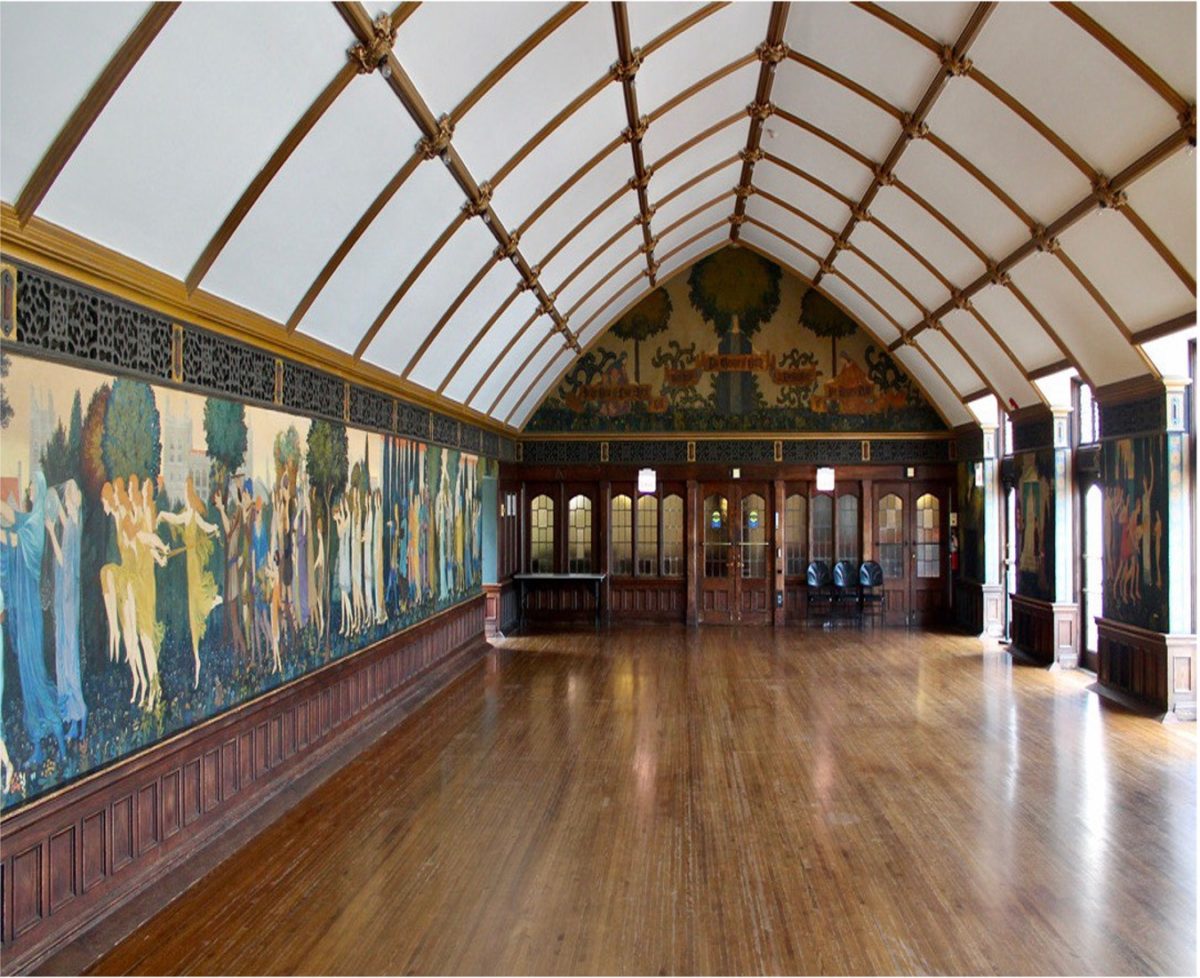
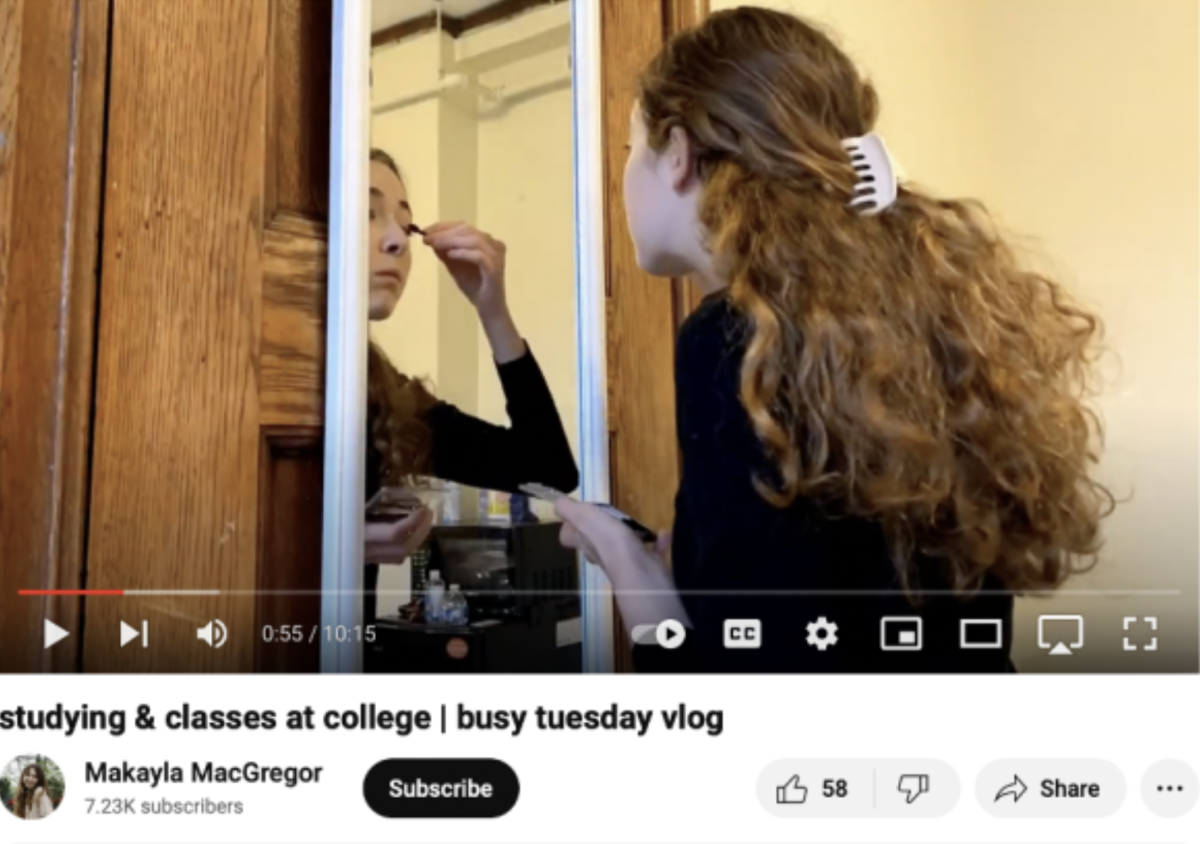





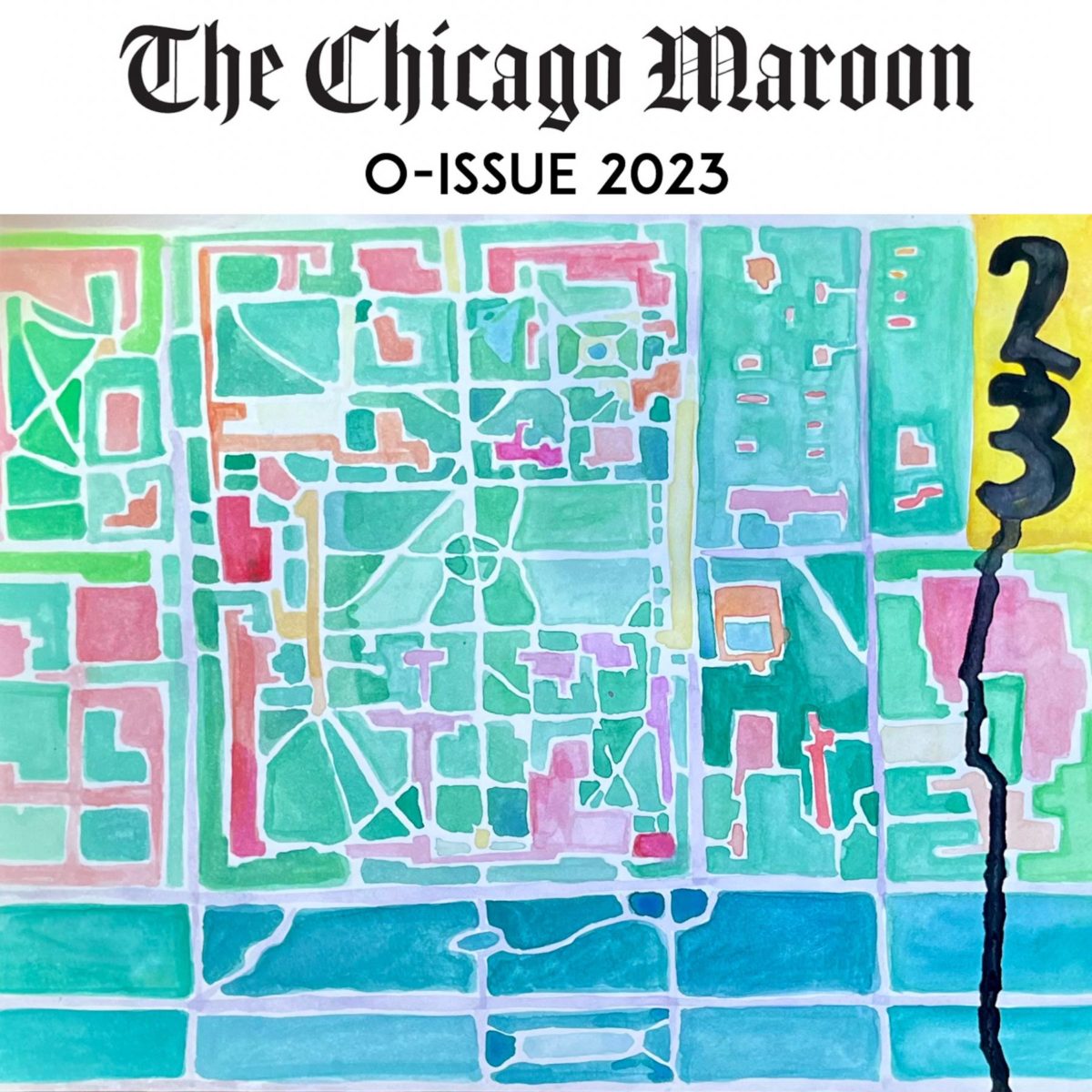
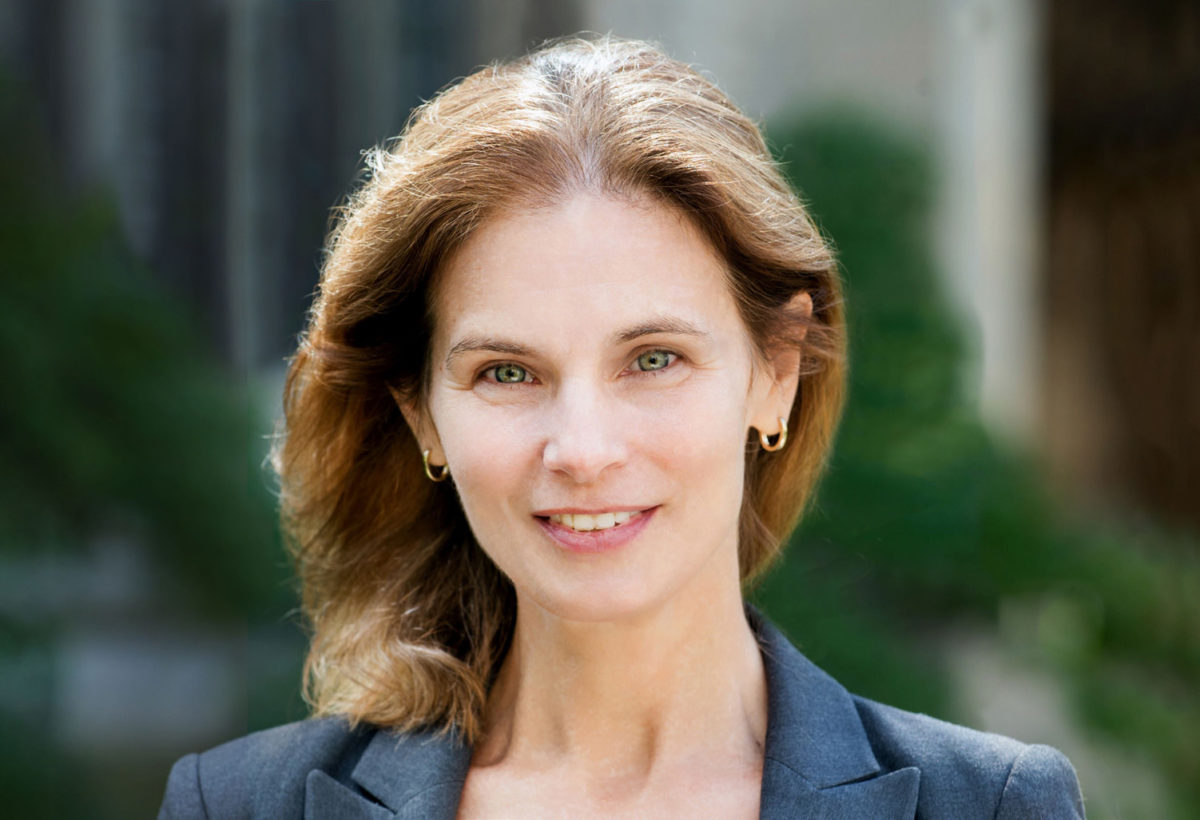
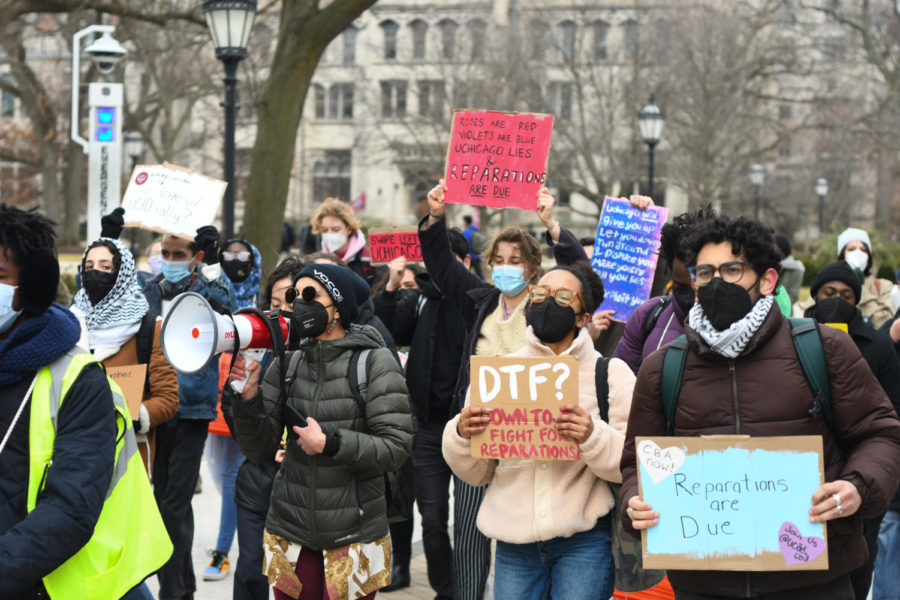
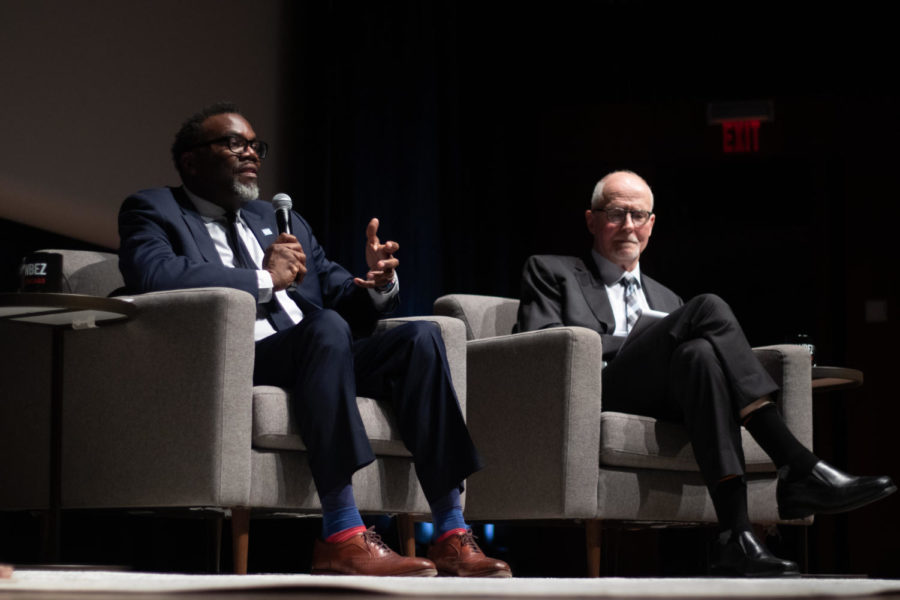
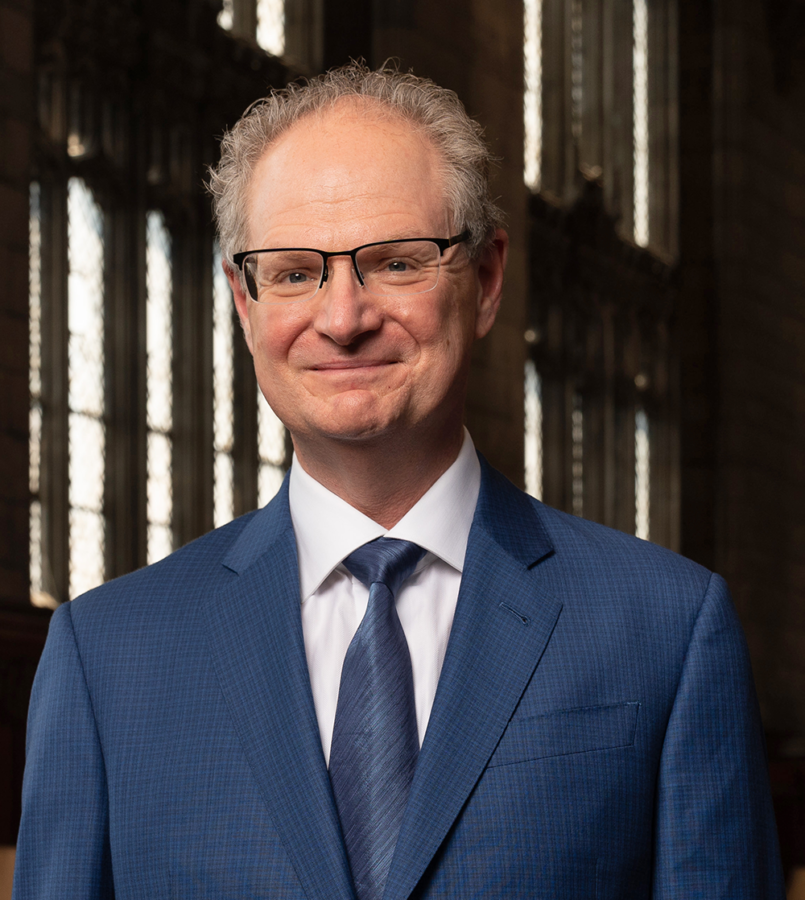


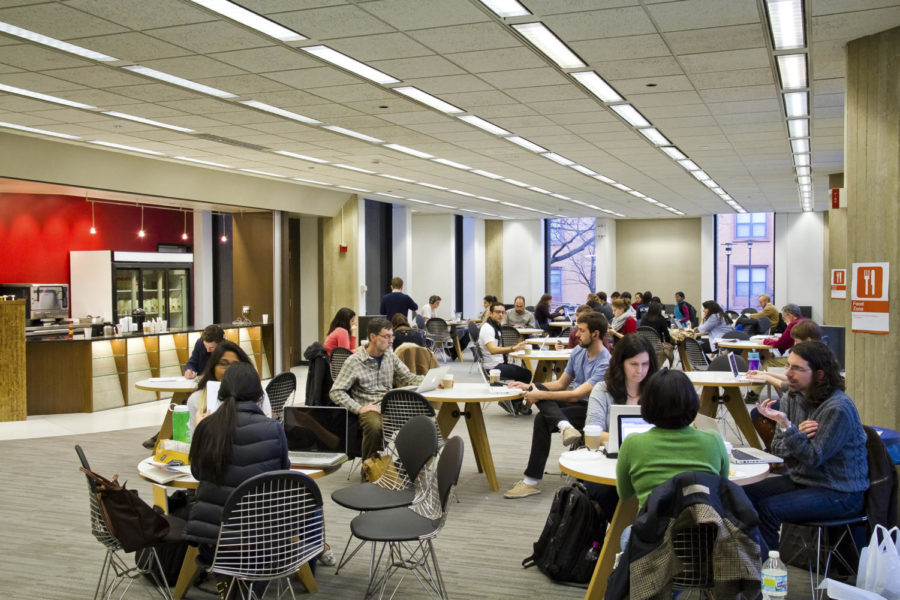
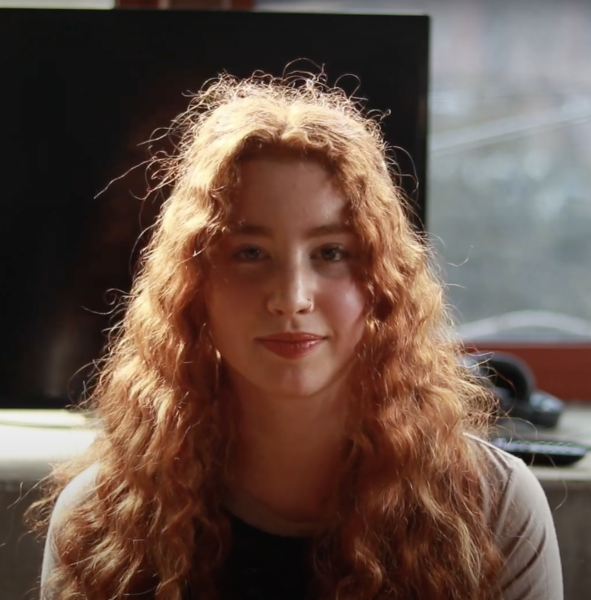
Sig / Sep 22, 2023 at 11:20 am
“Besides their offices, much more differentiates Callard from Sanderson and Sanderson from Callard—namely that they specialize in different social sciences—philosophy and economics—with different methods for understanding the world.” I didn’t know, until I read the article, that philosophy was a social science… Thanks.
Katie EisenstadtPhD / Sep 20, 2023 at 7:47 pm
I very much enjoyed this interesting and thorough article. I loved the insight we get into life on campus, professor student relationships, different teaching strategies and student’s perceptions of their professors.
I appreciated the specific quotes of students Elena interviewed which made the material she writes about come to life.
All in all a very interesting read